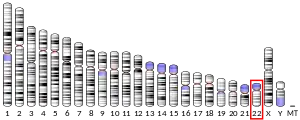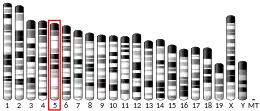| MN1 | |||||||||||||||||||||||||||||||||||||||||||||||||||
|---|---|---|---|---|---|---|---|---|---|---|---|---|---|---|---|---|---|---|---|---|---|---|---|---|---|---|---|---|---|---|---|---|---|---|---|---|---|---|---|---|---|---|---|---|---|---|---|---|---|---|---|
| Identifiers | |||||||||||||||||||||||||||||||||||||||||||||||||||
| Aliases | MN1, MGCR, MGCR1, MGCR1-PEN, dJ353E16.2, meningioma (disrupted in balanced translocation) 1, MN1 proto-oncogene, transcriptional regulator, CEBALID | ||||||||||||||||||||||||||||||||||||||||||||||||||
| External IDs | OMIM: 156100 MGI: 1261813 HomoloGene: 37620 GeneCards: MN1 | ||||||||||||||||||||||||||||||||||||||||||||||||||
| |||||||||||||||||||||||||||||||||||||||||||||||||||
| |||||||||||||||||||||||||||||||||||||||||||||||||||
| |||||||||||||||||||||||||||||||||||||||||||||||||||
| |||||||||||||||||||||||||||||||||||||||||||||||||||
| |||||||||||||||||||||||||||||||||||||||||||||||||||
| Wikidata | |||||||||||||||||||||||||||||||||||||||||||||||||||
| |||||||||||||||||||||||||||||||||||||||||||||||||||
MN1 is a gene found on human chromosome 22, with gene map locus 22q12.3-qter.[5] Its official full name is meningioma (disrupted in balanced translocation) 1 because it is disrupted by a balanced translocation (4;22) in a meningioma.
Function
MN1 is a transcription coregulator that enhances or represses gene expression through direct or indirect interaction with the gene regulatory machinery. Reported interactions include the BAF (SWI/SNF) complex.[6] RAC3 and p300.[7] MN1 can act as a coactivator of several transcription factors, including RAR/RXR and the vitamin D receptor.[8] In AML, MN1 binds to genomic sites enriched for binding motifs of ETS factors as well as hematopoietic transcription factors such as RUNX1, GATA2, HOXA cluster genes, and MEIS1.[6] MN1 induces a hematopoietic stem and progenitor gene expression program centered on HOXA cluster genes, particularly HOXA9 and MEIS1 via its interaction with the BAF complex[9][6]
Clinical significance
The translocation of MN1 was first reported in meningioma.[5] A substantial percentage of primitive neuro-ectodermal tumors (PNET) have MN1 translocations[10] Several different partners were described, although in many cases no fusion partner was identified. MN1 transloations also occur in up to 2% of acute myeloid leukemia (AML)[11] Described fusion partners include ETV6, STAT3 and FLI1.[12][11][13] About 50% of fusions are out of frame and result in high expression of MN1 via enhancer hijacking.[11][6] High MN1 expression in AML and MDS is associated with poor outcome [14][15][16][17][18][19][20]
Mutations in this gene have been associated with cleft palate[21][22][23] and an atypical form of rhombencephalosynapsis.[24]
References
- 1 2 3 GRCh38: Ensembl release 89: ENSG00000169184 - Ensembl, May 2017
- 1 2 3 GRCm38: Ensembl release 89: ENSMUSG00000070576 - Ensembl, May 2017
- ↑ "Human PubMed Reference:". National Center for Biotechnology Information, U.S. National Library of Medicine.
- ↑ "Mouse PubMed Reference:". National Center for Biotechnology Information, U.S. National Library of Medicine.
- 1 2 Lekanne Deprez RH, Riegman PH, Groen NA, Warringa UL, van Biezen NA, Molijn AC, et al. (April 1995). "Cloning and characterization of MN1, a gene from chromosome 22q11, which is disrupted by a balanced translocation in a meningioma". Oncogene. 10 (8): 1521–8. PMID 7731706.
- 1 2 3 4 Riedel SS, Lu C, Xie HM, Nestler K, Vermunt MW, Lenard A, et al. (June 2021). "Intrinsically disordered Meningioma-1 stabilizes the BAF complex to cause AML". Molecular Cell. 81 (11): 2332–2348.e9. doi:10.1016/j.molcel.2021.04.014. ISSN 1097-2765. PMC 8380056. PMID 33974912.
- ↑ van Wely KH, Molijn AC, Buijs A, Meester-Smoor MA, Aarnoudse AJ, Hellemons A, et al. (February 2003). "The MN1 oncoprotein synergizes with coactivators RAC3 and p300 in RAR-RXR-mediated transcription". Oncogene. 22 (5): 699–709. doi:10.1038/sj.onc.1206124. PMID 12569362. S2CID 10105930.
- ↑ Sutton AL, Zhang X, Ellison TI, Macdonald PN (September 2005). "The 1,25(OH)2D3-regulated transcription factor MN1 stimulates vitamin D receptor-mediated transcription and inhibits osteoblastic cell proliferation". Molecular Endocrinology. 19 (9): 2234–44. doi:10.1210/me.2005-0081. PMID 15890672.
- ↑ Heuser M, Yun H, Berg T, Yung E, Argiropoulos B, Kuchenbauer F, et al. (July 2011). "Cell of origin in AML: susceptibility to MN1-induced transformation is regulated by the MEIS1/AbdB-like HOX protein complex". Cancer Cell. 20 (1): 39–52. doi:10.1016/j.ccr.2011.06.020. PMC 3951989. PMID 21741595.
- ↑ Sturm D, Orr BA, Toprak UH, Hovestadt V, Jones DT, Capper D, et al. (February 2016). "New Brain Tumor Entities Emerge from Molecular Classification of CNS-PNETs". Cell. 164 (5): 1060–1072. doi:10.1016/j.cell.2016.01.015. PMC 5139621. PMID 26919435.
- 1 2 3 Wang T, Chen X, Hui S, Ni J, Yin Y, Cao W, et al. (November 2020). "Ectopia associated MN1 fusions and aberrant activation in myeloid neoplasms with t(12;22)(p13;q12)". Cancer Gene Therapy. 27 (10–11): 810–818. doi:10.1038/s41417-019-0159-x. PMC 7661342. PMID 31902945.
- ↑ Buijs A, Sherr S, van Baal S, van Bezouw S, van der Plas D, Geurts van Kessel A, et al. (April 1995). "Translocation (12;22) (p13;q11) in myeloproliferative disorders results in fusion of the ETS-like TEL gene on 12p13 to the MN1 gene on 22q11". Oncogene. 10 (8): 1511–9. PMID 7731705.
- ↑ Dang J, Nance S, Ma J, Cheng J, Walsh MP, Vogel P, et al. (October 2017). "AMKL chimeric transcription factors are potent inducers of leukemia". Leukemia. 31 (10): 2228–2234. doi:10.1038/leu.2017.51. PMC 5791746. PMID 28174417.
- ↑ Heuser M, Beutel G, Krauter J, Döhner K, von Neuhoff N, Schlegelberger B, Ganser A (December 2006). "High meningioma 1 (MN1) expression as a predictor for poor outcome in acute myeloid leukemia with normal cytogenetics". Blood. 108 (12): 3898–905. doi:10.1182/blood-2006-04-014845. PMID 16912223. S2CID 16434975.
- ↑ Haferlach C, Kern W, Schindela S, Kohlmann A, Alpermann T, Schnittger S, Haferlach T (March 2012). "Gene expression of BAALC, CDKN1B, ERG, and MN1 adds independent prognostic information to cytogenetics and molecular mutations in adult acute myeloid leukemia". Genes, Chromosomes & Cancer. 51 (3): 257–65. doi:10.1002/gcc.20950. PMID 22072540. S2CID 205828447.
- ↑ Langer C, Marcucci G, Holland KB, Radmacher MD, Maharry K, Paschka P, et al. (July 2009). "Prognostic importance of MN1 transcript levels, and biologic insights from MN1-associated gene and microRNA expression signatures in cytogenetically normal acute myeloid leukemia: a cancer and leukemia group B study". Journal of Clinical Oncology. 27 (19): 3198–204. doi:10.1200/JCO.2008.20.6110. PMC 2716941. PMID 19451432.
- ↑ Metzeler KH, Dufour A, Benthaus T, Hummel M, Sauerland MC, Heinecke A, et al. (October 2009). "ERG expression is an independent prognostic factor and allows refined risk stratification in cytogenetically normal acute myeloid leukemia: a comprehensive analysis of ERG, MN1, and BAALC transcript levels using oligonucleotide microarrays". Journal of Clinical Oncology. 27 (30): 5031–8. doi:10.1200/JCO.2008.20.5328. PMID 19752345.
- ↑ Schwind S, Marcucci G, Kohlschmidt J, Radmacher MD, Mrózek K, Maharry K, et al. (October 2011). "Low expression of MN1 associates with better treatment response in older patients with de novo cytogenetically normal acute myeloid leukemia". Blood. 118 (15): 4188–98. doi:10.1182/blood-2011-06-357764. PMC 3291490. PMID 21828125.
- ↑ Xiang L, Li M, Liu Y, Cen J, Chen Z, Zhen X, et al. (August 2013). "The clinical characteristics and prognostic significance of MN1 gene and MN1-associated microRNA expression in adult patients with de novo acute myeloid leukemia". Annals of Hematology. 92 (8): 1063–9. doi:10.1007/s00277-013-1729-x. PMID 23515710. S2CID 23939296.
- ↑ Grosveld GC (2007). "MN1, a novel player in human AML". Blood Cells, Molecules & Diseases. 39 (3): 336–9. doi:10.1016/j.bcmd.2007.06.009. PMC 2387274. PMID 17698380.
- ↑ Shu L, He D, Wu D, Peng Y, Xi H, Mao X, Wang H (March 2021). "MN1 gene loss-of-function mutation causes cleft palate in a pedigree". Brain. 144 (2): e18. doi:10.1093/brain/awaa431. PMC 7940500. PMID 33351070.
- ↑ Breckpot J, Anderlid BM, Alanay Y, Blyth M, Brahimi A, Duban-Bedu B, et al. (January 2016). "Chromosome 22q12.1 microdeletions: confirmation of the MN1 gene as a candidate gene for cleft palate". European Journal of Human Genetics. 24 (1): 51–8. doi:10.1038/ejhg.2015.65. PMC 4795238. PMID 25944382.
- ↑ Meester-Smoor MA, Vermeij M, van Helmond MJ, Molijn AC, van Wely KH, Hekman AC, et al. (May 2005). "Targeted disruption of the Mn1 oncogene results in severe defects in development of membranous bones of the cranial skeleton". Molecular and Cellular Biology. 25 (10): 4229–36. doi:10.1128/MCB.25.10.4229-4236.2005. PMC 1087735. PMID 15870292.
- ↑ Mak CC, Doherty D, Lin AE, Vegas N, Cho MT, Viot G, et al. (January 2020). "MN1 C-terminal truncation syndrome is a novel neurodevelopmental and craniofacial disorder with partial rhombencephalosynapsis". Brain. 143 (1): 55–68. doi:10.1093/brain/awz379. PMC 7962909. PMID 31834374.
Further reading
- Kawagoe H, Grosveld GC (December 2005). "MN1-TEL myeloid oncoprotein expressed in multipotent progenitors perturbs both myeloid and lymphoid growth and causes T-lymphoid tumors in mice". Blood. 106 (13): 4278–86. doi:10.1182/blood-2005-04-1674. PMC 1895241. PMID 16081688.
- Schroeder T, Czibere A, Zohren F, Aivado M, Gattermann N, Germing U, Haas R (June 2009). "Meningioma 1 gene is differentially expressed in CD34 positive cells from bone marrow of patients with myelodysplastic syndromes with the highest expression in refractory anemia with excess of blasts and secondary acute myeloid leukemia". Leukemia & Lymphoma. 50 (6): 1043–6. doi:10.1080/10428190902913591. PMID 19391034. S2CID 38372641.
- Meester-Smoor MA, Janssen MJ, Grosveld GC, de Klein A, van IJcken WF, Douben H, Zwarthoff EC (October 2008). "MN1 affects expression of genes involved in hematopoiesis and can enhance as well as inhibit RAR/RXR-induced gene expression". Carcinogenesis. 29 (10): 2025–34. doi:10.1093/carcin/bgn168. PMC 3202306. PMID 18632758.
- Carella C, Bonten J, Sirma S, Kranenburg TA, Terranova S, Klein-Geltink R, et al. (August 2007). "MN1 overexpression is an important step in the development of inv(16) AML". Leukemia. 21 (8): 1679–90. doi:10.1038/sj.leu.2404778. PMID 17525718. S2CID 21088872.
- Heuser M, Argiropoulos B, Kuchenbauer F, Yung E, Piper J, Fung S, et al. (September 2007). "MN1 overexpression induces acute myeloid leukemia in mice and predicts ATRA resistance in patients with AML". Blood. 110 (5): 1639–47. doi:10.1182/blood-2007-03-080523. PMID 17494859.
- Barbe L, Lundberg E, Oksvold P, Stenius A, Lewin E, Björling E, et al. (March 2008). "Toward a confocal subcellular atlas of the human proteome". Molecular & Cellular Proteomics. 7 (3): 499–508. doi:10.1074/mcp.M700325-MCP200. PMID 18029348.
- Kawagoe H, Grosveld GC (December 2005). "Conditional MN1-TEL knock-in mice develop acute myeloid leukemia in conjunction with overexpression of HOXA9". Blood. 106 (13): 4269–77. doi:10.1182/blood-2005-04-1679. PMC 1895240. PMID 16105979.
- Kandilci A, Grosveld GC (August 2009). "Reintroduction of CEBPA in MN1-overexpressing hematopoietic cells prevents their hyperproliferation and restores myeloid differentiation". Blood. 114 (8): 1596–606. doi:10.1182/blood-2009-02-205443. PMC 2731639. PMID 19561324.
- Trynka G, Zhernakova A, Romanos J, Franke L, Hunt KA, Turner G, et al. (August 2009). "Coeliac disease-associated risk variants in TNFAIP3 and REL implicate altered NF-kappaB signalling". Gut. 58 (8): 1078–83. doi:10.1136/gut.2008.169052. PMID 19240061. S2CID 17111427.
- Gastier JM, Brody T, Pulido JC, Businga T, Sunden S, Hu X, et al. (February 1996). "Development of a screening set for new (CAG/CTG)n dynamic mutations". Genomics. 32 (1): 75–85. doi:10.1006/geno.1996.0078. PMID 8786123.
- Collins JE, Wright CL, Edwards CA, Davis MP, Grinham JA, Cole CG, et al. (2004). "A genome annotation-driven approach to cloning the human ORFeome". Genome Biology. 5 (10): R84. doi:10.1186/gb-2004-5-10-r84. PMC 545604. PMID 15461802.
- Beausoleil SA, Jedrychowski M, Schwartz D, Elias JE, Villén J, Li J, et al. (August 2004). "Large-scale characterization of HeLa cell nuclear phosphoproteins". Proceedings of the National Academy of Sciences of the United States of America. 101 (33): 12130–5. Bibcode:2004PNAS..10112130B. doi:10.1073/pnas.0404720101. PMC 514446. PMID 15302935.
- Meester-Smoor MA, Molijn AC, Zhao Y, Groen NA, Groffen CA, Boogaard M, et al. (February 2007). "The MN1 oncoprotein activates transcription of the IGFBP5 promoter through a CACCC-rich consensus sequence". Journal of Molecular Endocrinology. 38 (1–2): 113–25. doi:10.1677/jme.1.02110. PMID 17242174.



